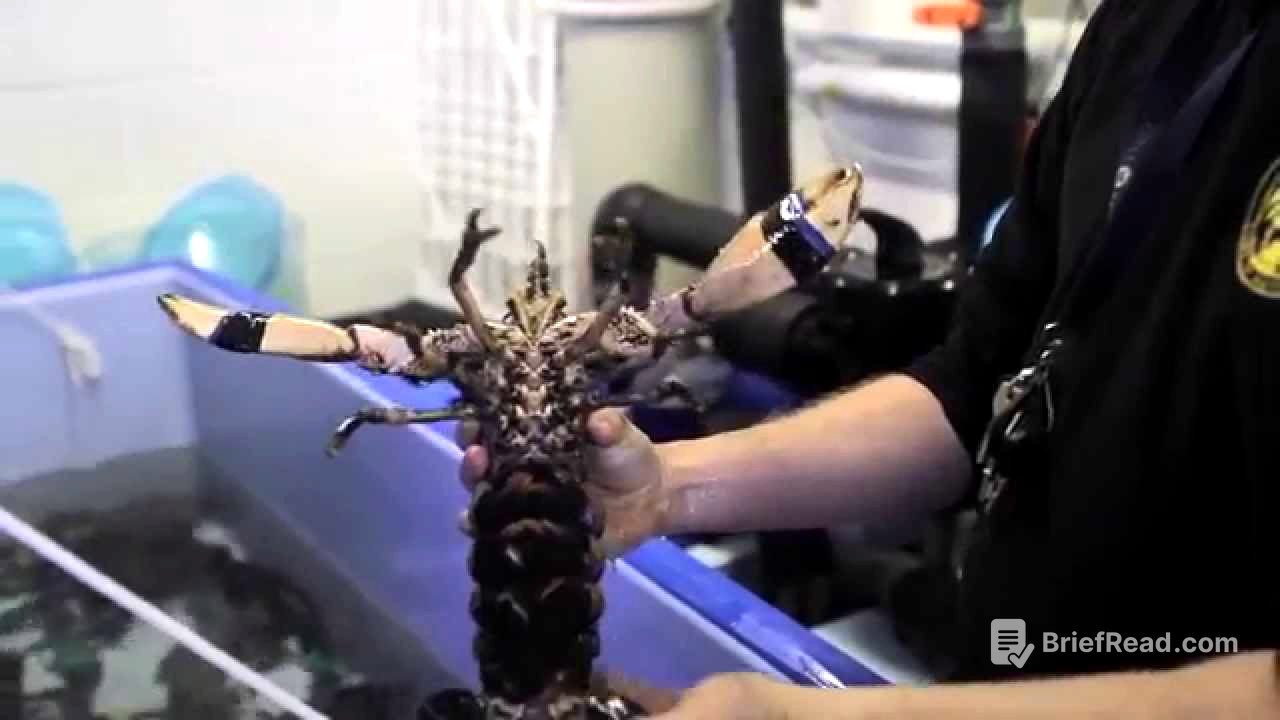TLDR;
The National Lobster Hatchery focuses on improving lobster survival rates by intervening during their vulnerable planktonic stage. They collect egg-bearing lobsters from local fishermen, nurture the larvae through their early stages in a controlled environment, and then release them back into the sea using dive releases and fisherman-assisted boat releases. The goal is to significantly increase the number of juvenile lobsters that survive to adulthood, thereby boosting local lobster populations and supporting the fishing industry.
- The hatchery aims to release 100,000 juvenile lobsters annually within the next 5 years.
- They improve survival rates by approximately a thousand times compared to natural conditions.
- Collaboration with local fishermen is crucial for obtaining brood stock and releasing lobsters back into their natural habitat.
Lobster Life Cycle and Hatchery Goals [0:06]
Lobsters face high mortality rates during their early planktonic stage. The National Lobster Hatchery aims to bypass this vulnerable period to increase survival rates. By nurturing lobsters in a controlled environment, the hatchery helps them reach a stage where their natural survival rates are significantly higher.
Brood Stock and Egg Development [0:36]
The hatchery obtains brood stock from local fishermen, specifically egg-bearing lobsters, also known as "berried" females due to the blackberry-like appearance of their eggs. Once the eggs hatch, the female lobsters are returned to the fishermen or wholesalers from whom they were sourced. The eggs take a few weeks to hatch, producing larvae that are then moved to the larval room. The hatchery has ambitious goals to release around 100,000 juvenile lobsters into local seas each year, requiring the use of several hundred "berried" females.
Larval Room and Early Stage Development [1:48]
The larval lobsters spend their first three stages of life in the larval room, molting three times before becoming bottom-dwelling stage four lobsters. They are kept in cones with circulating air and water to mimic their natural planktonic environment. The aim is to increase the survival rate of these larvae, which are fed copepods, krill, and other food to promote rapid growth. After about two weeks, they develop into small lobsters and move to the bottom, reducing their risk of predation.
Aqua Hives and Raceways [3:13]
After the larval room, lobsters are transferred to raceways or aqua hives. Aqua hives allow for higher densities of lobsters. Raceways are primarily used for visitors to view the stage four lobsters. These lobsters are fed specially formulated pellets to support their growth.
Release Methods and Collaboration with Fishermen [4:04]
Lobsters are released back into the sea using two methods: dive releases for smaller numbers and boat releases for larger numbers. Boat releases involve using a tube to deliver the lobsters to the seabed in suitable habitats. The hatchery collaborates with local fishermen, who provide the brood stock, in the release process. This collaboration is essential for the project's success, as it ensures the fishermen are engaged and informed about the hatchery's work.
Conservation Impact and Personal Satisfaction [5:23]
The hatchery's work is driven by a commitment to conservation and a desire to positively impact local lobster stocks. The hatchery improves the survival rate of lobsters by approximately a thousand times, bridging the gap between the vulnerable egg stage and the more resilient juvenile stage.









